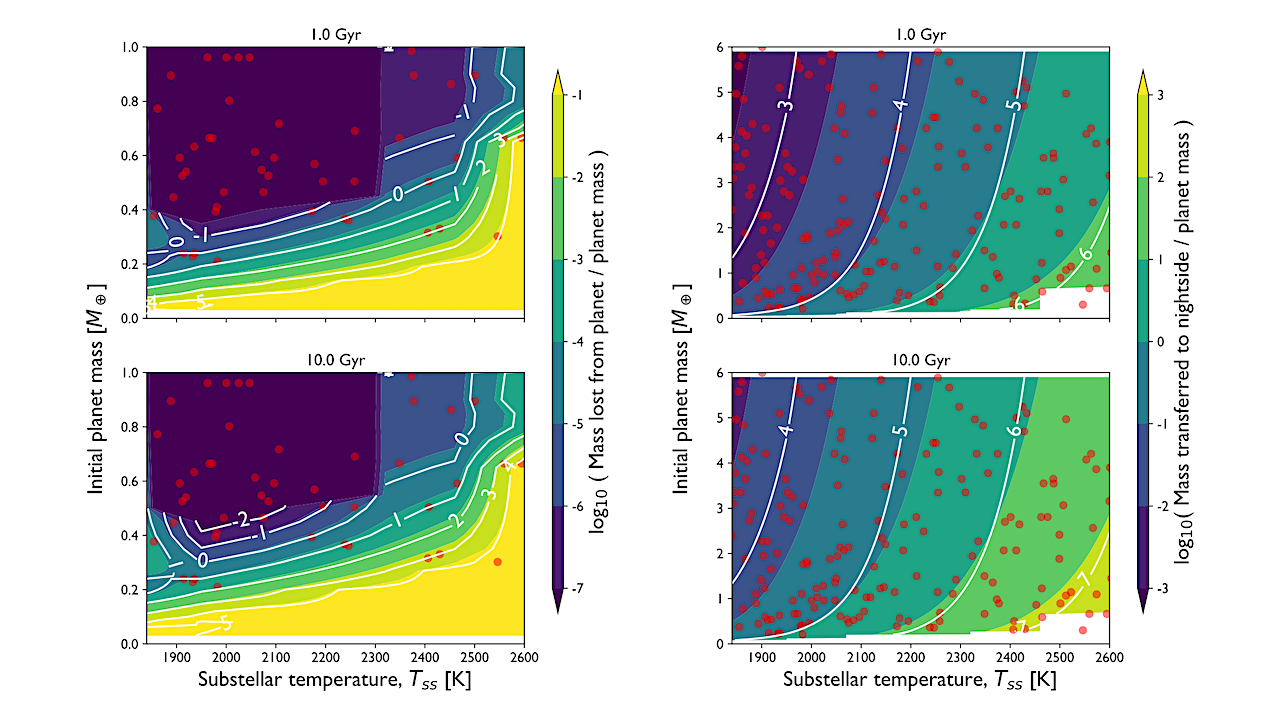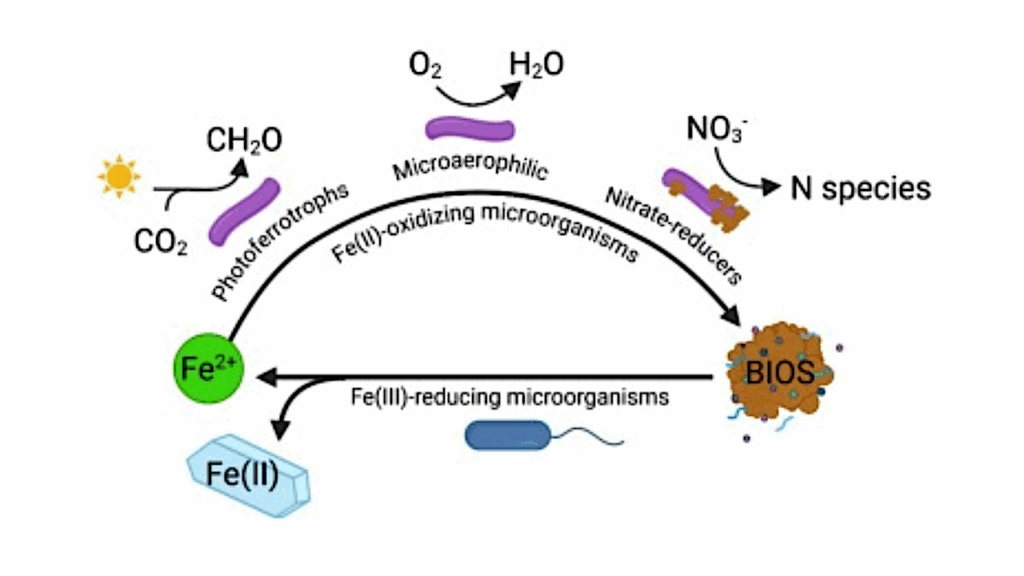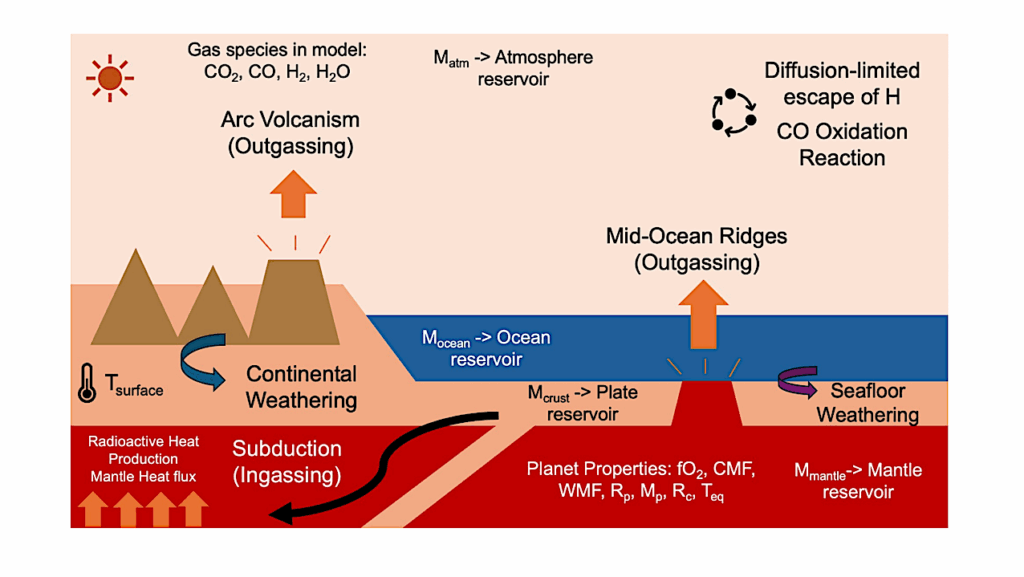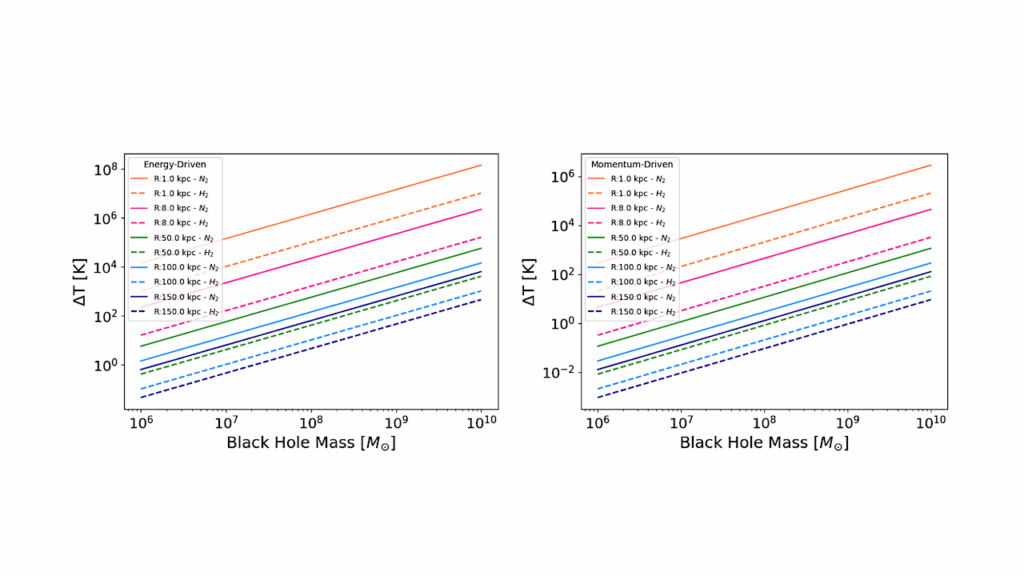Chemical Evolution Of An Evaporating Lava Pool

Many known rocky exoplanets are so highly irradiated that their dayside surfaces are molten, and `silicate atmospheres’, composed of rock-forming elements, are generated above these lava pools.
The compositions of these ‘lava planet’ atmospheres are of great interest because they must be linked to the composition of the underlying rocky interiors. It may be possible to investigate these atmospheres, either by detecting them directly via emission spectroscopy or by observing the dust tails which trail the low mass ‘catastrophically evaporating planets’.
In this work, we develop a simple chemical model of the lava pool–atmosphere system under mass loss, to study its evolution. Mass loss can occur both into space and from the day to the nightside.
We show that the system reaches a steady state, where the material in the escaping atmosphere has the same composition as that melted into the lava pool from the mantle. We show that the catastrophically evaporating planets are likely to be in this evolved state. This means that the composition of their dust tails is likely to be a direct trace of the composition of the mantle material that is melted into the lava pool.
We further show that, due to the strength of day-to-nightside atmospheric transport, this evolved state may even apply to relatively high-mass planets (>1 Earth Mass). Moreover, the low pressure of evolved atmospheres implies that non-detections may not be due to the total lack of an atmosphere. Both conclusions are important for the interpretation of future observations.
Alfred Curry, Subhanjoy Mohanty, James E. Owen
Comments: Accepted for publication in MNRAs. 19 pages, 15 figures
Subjects: Earth and Planetary Astrophysics (astro-ph.EP)
Cite as: arXiv:2411.13686 [astro-ph.EP] (or arXiv:2411.13686v1 [astro-ph.EP] for this version)
https://doi.org/10.48550/arXiv.2411.13686
Focus to learn more
Related DOI:
https://doi.org/10.1093/mnras/stae2583
Focus to learn more
Submission history
From: Alfred Curry
[v1] Wed, 20 Nov 2024 20:05:26 UTC (865 KB)
https://arxiv.org/abs/2411.13686
Astrobiology, Astrogeology,








